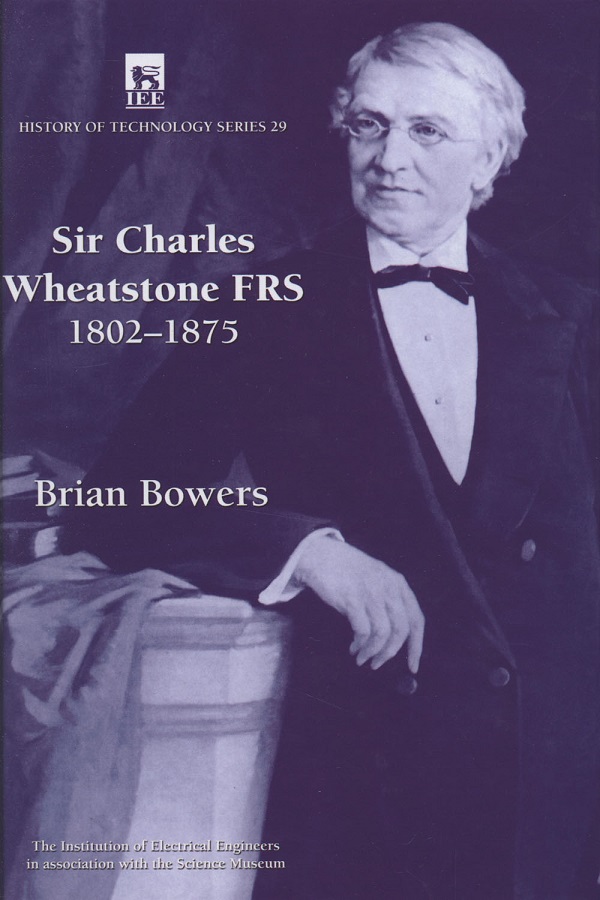- Agricultural Engineering and Technology
- Applied Physics
- Built Environment
- Computing and Networks
- Control, Robotics and Sensors
- Electrical Regulations
- Electromagnetics and Radar
- Energy Engineering
- Healthcare Technologies
- History and Management of Technology
- IET Codes and Guidance
- Manufacturing
- Materials, Circuits and Devices
- Model Forms
- Security
- Telecommunications
- Transportation

Sir Charles Wheatstone FRS, 1802-1875, 2nd Edition
by Brian Bowers
Charles Wheatstone began his life-long involvement with electrical engineering in the days when it was still at the stage of 'philosophical toys', yet he had a vision of telecommunications that could deliver printed messages around the world. With W.E. Cooke he developed the first practical electric telegraph. The problems of operating telegraphs over long distances led him into the field of electrical measurements.
Wheatstone was a major figure in Victorian science, making contributions in the fields of optics and acoustics as well as electrical engineering. He had an encyclopaedic knowledge of the scientific literature in several languages, and made connections which benefited not only his own work but also that of others. His research aided the development of the new King's College London into a centre of scientific excellence. He invented the concertina and the stereoscope, both very popular in the nineteenth century. He is usually remembered for the Wheatstone Bridge, which he did not invent but publicised in the course of a lecture on measurements. His early attempts to measure the speed of an electric current were inconclusive, but his later studies of signals in submarine cables contributed to the understanding of the effect of capacitance and inductance in cables. He made electric motors, including a linear motor. In his lifetime there was insufficient electric power to exploit them, but his self-excited generator indicated the way ahead.
This fascinating biography celebrates the bicentenary of Wheatstone's birth, and draws on information about the family business as well as letters, including correspondence with Cooke and Faraday, which were not available for the first edition, published by HMSO for the Science Museum in 1975.
About the Author
Brian Bowers, formerly curator of electrical engineering at the Science Museum, London, now consults on a number of museum projects in Britain and overseas. His interest in Sir Charles Wheatstone began in the 1970s when he gained his PhD on the life and work of Wheatstone. He is a Fellow of the IEE and has served the Institution on numerous Boards and Committees, and on Council. Other publications include A History of Electric Light and Power (IEE, second edition in preparation) and Lengthening the Day: a history of lighting technology (OUP).
Publication Year: 2001
Pages: 256
ISBN-13: 978-0-85296-103-2
Format: HBK
